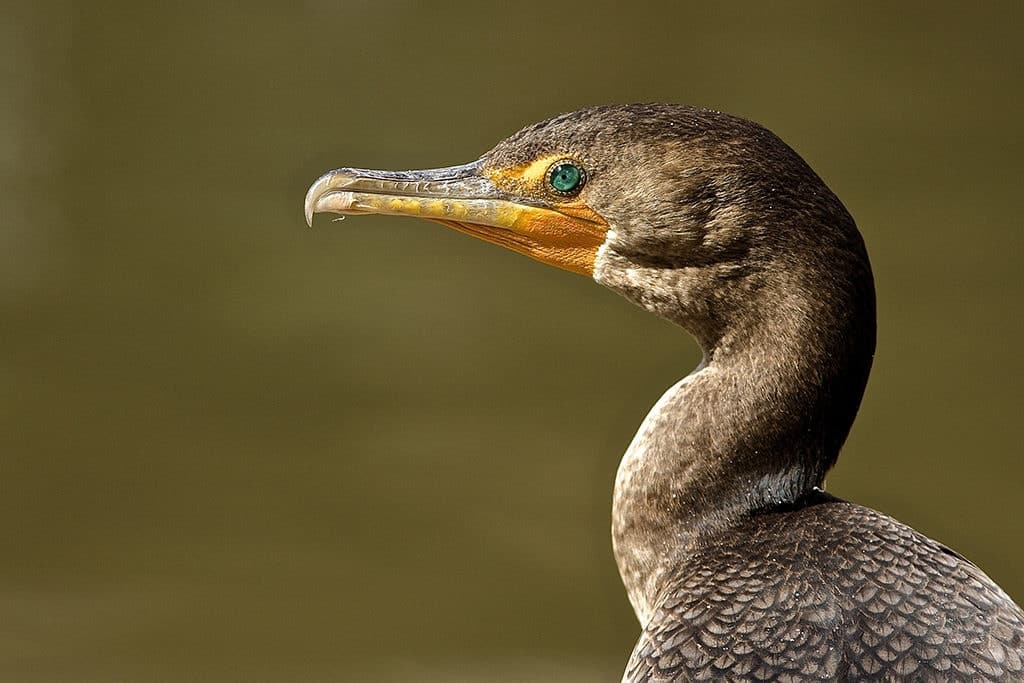Double-crested Cormorants of East Sand Island
East Sand Island is a remarkable place. Historically no more than a shifting sandbar, the U.S. Army Corps of Engineers stabilized the island and used it to deposit dredge spoils from the 1940s into the 1980s. Today the island encompasses nearly 60 acres and is home to an incredible assortment of birds.
The island includes the largest breeding colony of Caspian Terns in the world, with 10,700 breeding pairs at the colony’s peak in 2008; the largest breeding colony of Double-crested Cormorants in North America, with 15,000 breeding pairs representing more than 40% of the entire population in the Western United States in 2013; and the largest post-breeding roost site for Brown Pelicans on the West Coast, made up of more than 10,000 individual birds.
The island has been officially designated as an internationally recognized Important Bird Area. Over the past two decades, Bird Alliance of Oregon has worked to ensure that the critically important bird colonies on East Sand Island are well managed and not used as scapegoats for manmade declines in salmon and steelhead runs.

The birds congregate on the island because it provides good nesting habitat and a steady source of fish to feed on. They also congregate there because they have been driven out of other traditional nesting areas due to concerns about fish predation. In the 1990s, the Corps deliberately relocated a Caspian Tern nesting colony to the island, and the rise in the cormorant population is tied to declines in other cormorant nesting colonies up and down the West Coast.
Today the island is mired in controversy. Studies demonstrate that the cormorants and terns are consuming varying amounts of salmon and steelhead listed under the Endangered Species Act. However, the birds and fish have coexisted since time immemorial. Declines in salmon and steelhead are the result of impacts from the Columbia River Hydropower System (Dams).
The Corps has steadfastly refused to do what is necessary to address the dams and protect salmon and steelhead. Over the past 20 years, the Corps has been sued and lost 5 times in federal court for the inadequacy of their salmon recovery efforts. In 2016, Federal Judge Michael Simon issued a ruling that threw out the Corps most recent plan, stating that the Corps had wasted billions of taxpayer dollars but failed to adequately address the primary causes of decline.

In 2015, the U.S. Army Corps initiated a highly controversial and scientifically unsupported effort to reduce the cormorant population on East Sand Island by shooting nearly 11,000 birds and destroying more than 26,000 active nests over a four year period. The project was heavily criticized by the Corps’ own biologist, conservation groups, and animal welfare groups. 99 percent of the 200,000 letters that were submitted opposed the slaughter.
The U.S. Fish and Wildlife Service approved the lethal control of these protected birds despite the fact that their own biologist’s analysis of the project would do nothing to benefit salmon. In 2016, under relentless pressure from government gunners, the entire colony collapsed with 16,000 birds abandoning their nests in a single day, an impact that went far beyond what was allowed under their permits and which places the entire western population in jeopardy. The world’s largest Double-crested Cormorant Colony still has not recovered.
Bird Alliance of Oregon has mobilized tens of thousands of letters opposing the slaughter, organized protests, documented the killing and brought a lawsuit in which the court ruled in our favor on the merits but inexplicably allowed the killing to continue.
Bird Alliance of Oregon’s Work to Protect Double-crested Cormorants
- Forcing the the US Army Corps to conduct a complete review and assessment of its misguided approach to relocating Caspian Terns from East Sand Island
- Forcing the Federal Government to commission an independent investigation of the lethal control of Double-crested Cormorants including efforts by the US Army Corps and US Fish and Wildlife Service to hide critical information that could have prevented this project.
- Advocating for a new Columbia River Salmon Plan which focuses on the primary causes of salmon declines, the federal hydropower system, by increasing flows for salmon over Columbia River dams and removal of four obsolete Snake River Dams
How You Can Help
- Become a Bird Alliance of Oregon Activist
